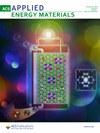Quasi-closed diaphragm based piezoelectric micromachined ultrasonic transducer with reduced Q and stress sensitivity for in-air rangefinding
IF 5.4
3区 材料科学
Q2 CHEMISTRY, PHYSICAL
引用次数: 0
Abstract
To improve the performance of the Piezoelectric Micromachined Ultrasonic Transducer (PMUT) based rangefinder and decrease its stress sensitivity, a novel design with quasi-closed structure is proposed. It adopts a circular piezoelectric composite diaphragm structure with clamped boundary, in which all the deposited stack layers in its central region are intentionally removed and additional cross-slits are created into the remaining silicon device layer. Due to the reduced mass and the enhanced thermal-viscous damping at slits, a 35.2 % decrease in quality factor Q has been achieved in the proposed PMUT when compared with the conventional design, resulting in a distinctly reduced blind area from 231.3 mm to 170.7 mm. At the same time, the proposed quasi-closed PMUT facilitates the release of accumulated stress in the device structure during fabrication and operation. As a result, an approximate 50 % reduction in frequency deviation between different as-fabricated PMUTs across the same wafer has been successfully obtained. Moreover, due to the increased linear operation range, the developed bare PMUT chip demonstrates a maximum detection distance of 3 m at the operation frequency of 71.5 kHz under 40 Vpp driving voltage. Given the advantages of lower Q, insensitivity to stress, good fabrication consistency and large linear operation range, the proposed quasi-closed PMUT design can well address the requirements on small blind area and large detection range for distance sensing applications.
基于准封闭隔膜的压电微机械超声波传感器,可降低 Q 值和应力灵敏度,用于空气测距
为了提高基于压电微机械超声波传感器(PMUT)的测距仪性能并降低其应力灵敏度,我们提出了一种具有准封闭结构的新型设计。它采用了一种具有夹紧边界的圆形压电复合膜片结构,有意去除其中心区域的所有沉积叠层,并在剩余的硅器件层上开出额外的交叉缝隙。与传统设计相比,由于减少了质量并增强了缝隙处的热粘性阻尼,拟议的 PMUT 的品质因数 Q 降低了 35.2%,从而使盲区面积从 231.3 mm 显著减小到 170.7 mm。同时,所提出的准封闭式 PMUT 还有利于在制造和运行过程中释放器件结构中的累积应力。因此,在同一晶圆上,成功实现了将不同制作完成的 PMUT 之间的频率偏差降低约 50%。此外,由于增加了线性工作范围,所开发的裸 PMUT 芯片在 40 Vpp 驱动电压下工作频率为 71.5 kHz 时,最大探测距离可达 3 m。考虑到较低的 Q 值、对应力不敏感、良好的制造一致性和较大的线性工作范围等优点,所提出的准封闭 PMUT 设计可以很好地解决距离传感应用对小盲区和大检测范围的要求。
本文章由计算机程序翻译,如有差异,请以英文原文为准。
求助全文
约1分钟内获得全文
求助全文
来源期刊

ACS Applied Energy Materials
Materials Science-Materials Chemistry
CiteScore
10.30
自引率
6.20%
发文量
1368
期刊介绍:
ACS Applied Energy Materials is an interdisciplinary journal publishing original research covering all aspects of materials, engineering, chemistry, physics and biology relevant to energy conversion and storage. The journal is devoted to reports of new and original experimental and theoretical research of an applied nature that integrate knowledge in the areas of materials, engineering, physics, bioscience, and chemistry into important energy applications.
 求助内容:
求助内容: 应助结果提醒方式:
应助结果提醒方式:


